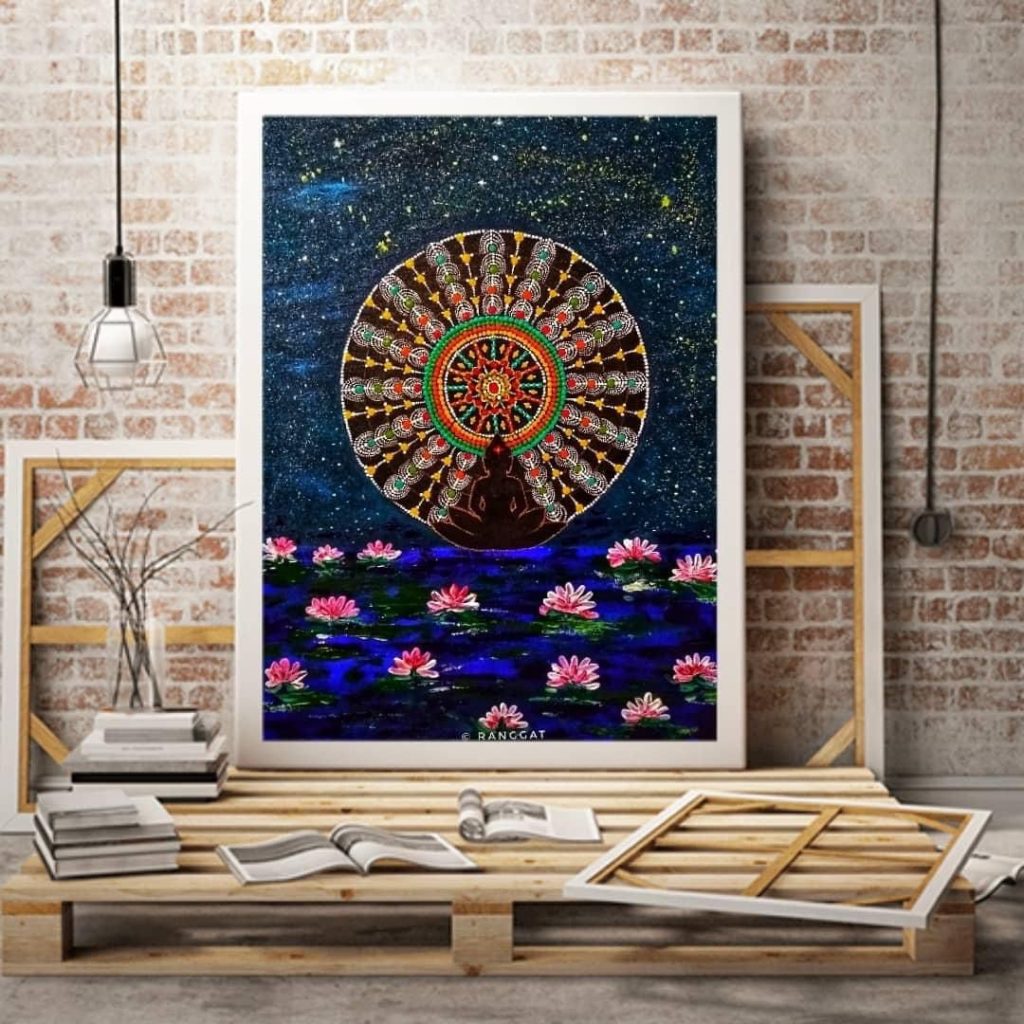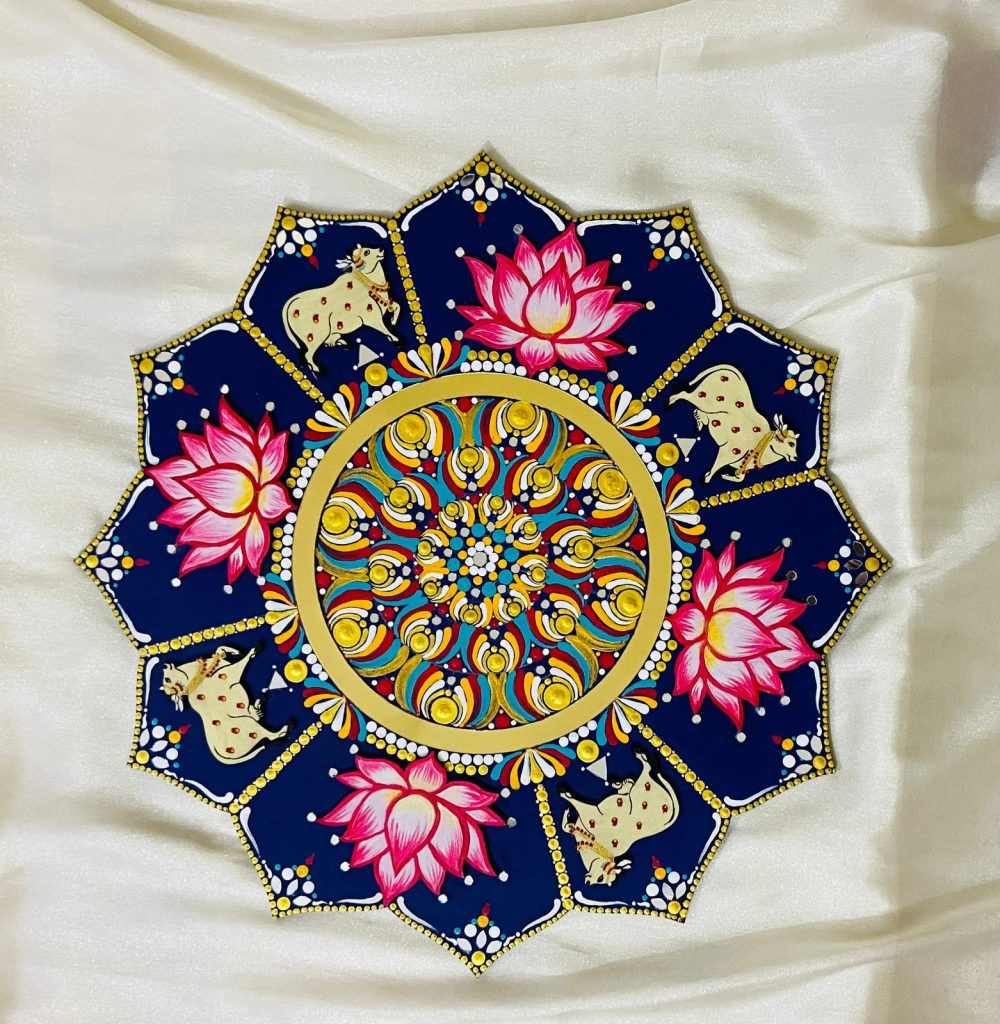Mandalas, which are complex geometric designs that represent harmony and togetherness, have deep spiritual meaning in many different cultures. The word “mandala” originates from the ancient Sanskrit language, meaning “circle.” It is a common symbol of wholeness and the infinite in meditation, ceremonies, and holy art all around the world.
1) Mandalas in Buddhism
Mandalas, which represent the universe, are utilized as meditation aids in Buddhism. They guide the practitioner on the path to enlightenment by acting as spiritual maps. The creation of a Buddhist mandala is often an elaborate process, involving monks who meticulously craft it out of colored sand. The sand is scattered into a body of water to symbolize the fleeting aspect of life, and the entire piece is ceremoniously destroyed upon completion, making this sand mandala an image of life’s impermanence.
2) Mandalas in Hinduism
Mandalas are important in meditation, rituals, and temple architecture in Hinduism. The geometric designs of these mandalas, called “yantras,” represent different aspects of the divine. The lotus blossom is the most frequently used shape in Hindu mandalas, representing spiritual awakening, cosmic rebirth, and purity. Tantric practitioners frequently utilize yantras to facilitate meditation and help them connect with particular deities or universal energies.
3) Mandalas in Native American Traditions
The spiritual value of circular shapes is also recognized by Native American tribes. The circle is a holy symbol of life, nature, and the interconnection of all things, and in these traditions, mandalas frequently take the shape of medicine wheels, dream catchers, and sand paintings.
4) Mandalas in Celtic Culture
The Celts, who were famous for their elaborate spiral patterns and knotwork, also used mandala-like patterns in their spirituality and artwork. The linked knots, spirals, and circles that are frequently found in Celtic mandalas represent eternity, unity, and the cycle of life, death, and rebirth. These patterns are seen in contemporary Celtic art, ancient stone carvings, and illuminated manuscripts such as the Book of Kells.
The Universal Meaning of Mandalas
The spiritual themes of mandalas are similar despite differences in culture. Their circular patterns symbolize the entirety of life, with the inner self or divinity frequently represented in the middle. Mandalas’ symmetrical designs promote equilibrium and serenity, making them effective meditation and self-discovery aids. They encourage practitioners to reflect on themselves and establish a closer spiritual bond.








